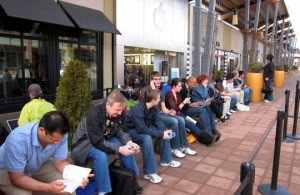HedgeFundLIVE.com —
Nuclear energy production
According to the International Atomic Energy Agency, Japan’s 54 nuclear reactors generate 280 billion kilowatt-hours every year, making Japan the third largest producer of nuclear energy in the world behind the US and France. The Fukushima Daiichi station that is the focus of the world’s attention houses 6 of the nation’s reactors and all of them came on line in the 1970’s. Although the US generates more nuclear power, nuclear is a smaller percentage of total energy production in the US, around 20%. Nuclear power is responsible for just under 30% of electricity in Japan.
What happened after the Hanshin earthquake in 1995
The Great Hanshin earthquake that took place on January 17, 1995 is probably the closest parallel to this one. In the month following the Hanshin quake, Tokyo’s TOPIX index fell by 7%. Through 6 months the TOPIX was down 11%. During that same 6 month time period the JPY/USD fell from 100 Yen per Dollar to 80-85 Yen per Dollar, a drop of 15-20%. Nonetheless, in months 6 through 12 after Hanshin, the TOPIX rallied by more than 30% and the Yen nearly returned to its pre-earthquake levels.
Insurers’ exposure
Credit Suisse was out yesterday saying that US-based insurers’ exposure to the March 11 earthquake is limited due to the rural nature of the primary affected area and a low insurance penetration rate, particularly by foreign insurers. Metlife’s acquisition of Alico from AIG last year did, however, came with about $7 billion of revenue exposure to Japan. According to company reports, “In Japan, Aflac (AFL) is the number one insurance company in terms of individual insurance policies in force”, and Japan comprises approximately 70% of AFL earnings. Prudential (PRU) and Reinsurance Group America (RGA) also have exposure to Japan. Japan and Korea are Prudential’s largest ex-US markets and Japanese life reinsurance accounts for about 3% of RGA’s premiums. (In related news, Gilbert Gottbried was fired as the voice of the Aflac duck for tweeting jokes about Japan that were “lacking in humor”.)
Retail exposure
In high end retail, Tiffany’s (TIF) and Coach (COH) have significant exposure to the Japanese consumer. In 2009, 19% of Tiffany’s net sales were attributed to Japan. Coach has 665 retail locations across the globe, 161 of which are in Japan, second only to the US. 20% of Coach’s net sales come from Japan. On the lower end of the retail spectrum, Walmart (WMT) has notable exposure to Japan as well. In terms of international operations, Japan is tied with the U.K. for number of stores operated with 371, behind only Mexico and Brazil.
US Bank exposure
CLSA released a note yesterday quantifying US banks’ exposure to Japan at about $100 billion. The most direct impact to US banks will likely be resultant of muted capital markets activity and deflated asset values in the region. Morgan Stanley (MS), Bank of America (BAC), Goldman Sachs (GS), Citigroup (C), and JP Morgan (JPM) each have subsidiaries in Japan. An interesting point in the note was that “banks could well be the beneficiaries of massive infrastructure spending through financing increased loan demand, and the opportunity for corporate Japan to draw down on hitherto little-used credit lines.”
COME JOIN OUR LIVE BROADCAST MON-FRI 8AM-5PM AT HEDGEFUNDLIVE.COM PICK A CHANNEL GET CONNCECTED.



Recent Comments